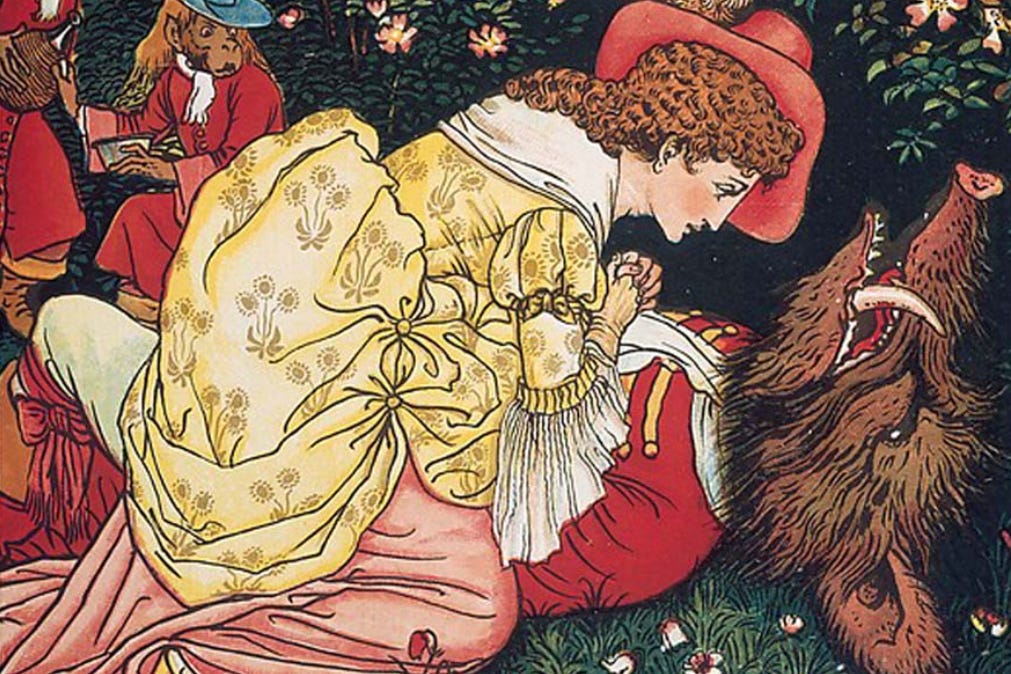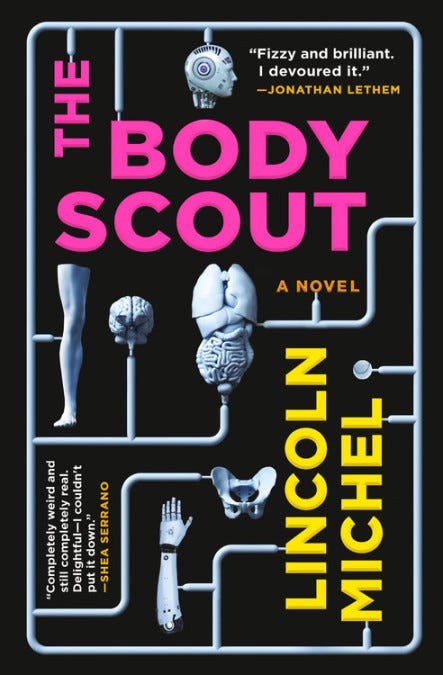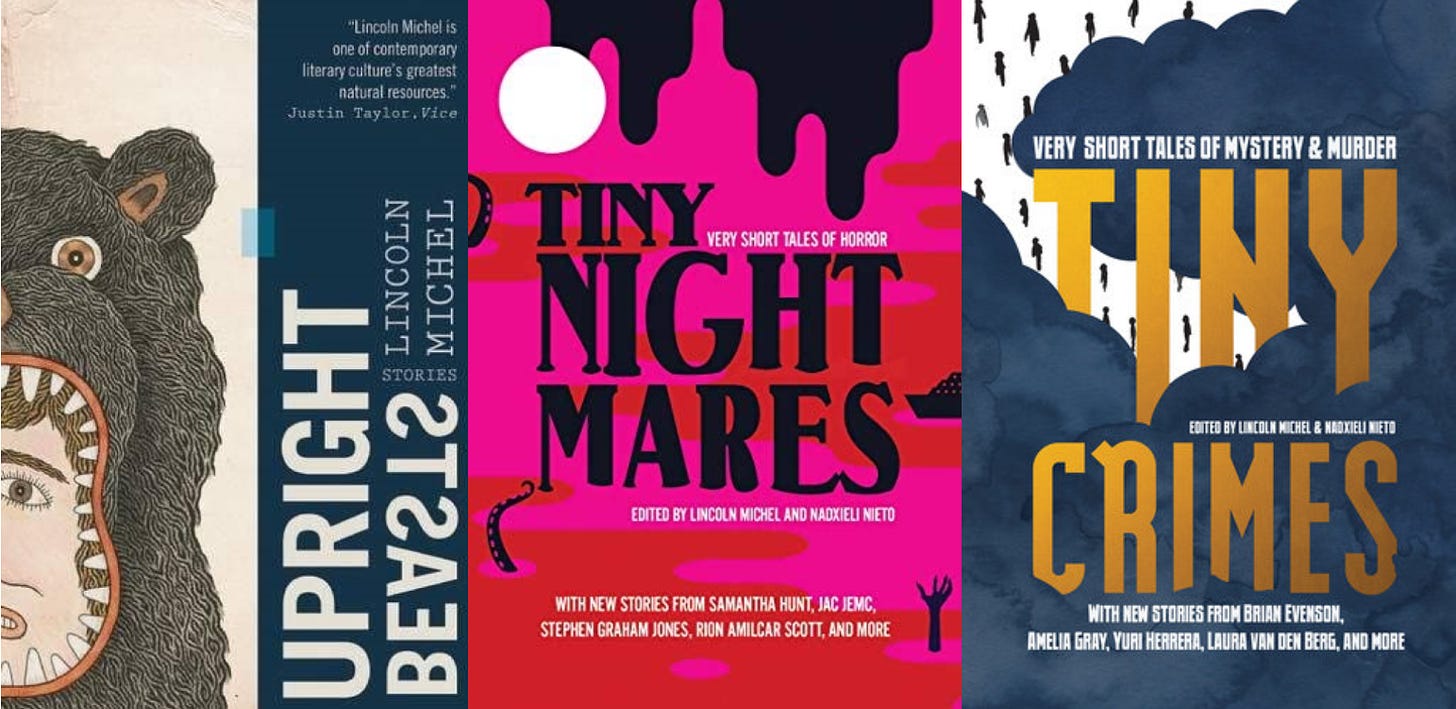Fairy Tale as MFA Antidote
Some writing advice from the stories that eschew all the writing advice
I often start my MFA courses with a discussion of fairy tales. It seems an obvious place to start, since fairy tales are some of humanity’s oldest stories and likely the first stories that my students remember reading as children. But I also love starting with fairy tales because they violate more or less every single rule of fiction writing that is drilled into us in creative writing classes.
Instead of “show don’t tell,” fairy tales prioritize telling over showing. Instead of demanding “round characters,” fairy tales embrace flat ones. Instead of logical “worldbuilding,” fairy tales operate with a surreal dream logic in abstract settings. Instead of starting “in media res,” they start “once upon a time.” Instead of “telling the story only you can tell,” fairy tales ask you to retell stories that have been told for centuries. So on and so forth.
Almost nothing you are taught about setting, character, voice, or structure in MFA classes or craft essays applies to the fairy tale form. And yet the form endures. Fairy tales still serve as source material for many of our novels and movies, and plenty of acclaimed contemporary writers deploy versions of the form. (I’m currently reading Kelly Link’s forthcoming story collection, White Cat, Black Dog, which opens with a terrific modern fairy tale.)
I’m not suggesting that the traditional writing advice is wrong, per se. Plenty of brilliant stories are written with all the usual advice. But we should always remember that there are no writing “rules,” there are only standards that apply to certain modes of storytelling. Those modes wax and wane in popularity. They chance according to culture and history. And there are infinite modes we can choose from.
So what is the mode of the fairy tale? What is the form? Here I defer to Kate Bernheimer, a great contemporary scholar (and writer) of fairy tales who outlines four qualities in her essay “Fairy Tale Is Form, Form Is Fairytale.” (The essay can be found in the Tin House’s The Writer’s Notebook, which I highly recommend as a craft book.) The four qualities Bernheimer describes are:
Flatness—specifically flatness of character. Fairy tales don’t delve into the psychology or interiority of characters, and typically limit them to one or two adjectives. The beautiful princess. The evil king. Etc. Similarly, fairy tales don’t have traditional character arcs or worry about “dynamic characters.” The evil witch at the start is probably going to be an evil witch at the end.
Abstraction—a general minimalism of description. Only a few colors are used and details are abstracted. “A young woman lived in a small house by the dark woods,” rather than a detailed layout of the house and a catalogue of the the types of trees in the forest.
Intuitive logic—essentially a dream logic or poetic logic, not far removed from what we would call “surrealism” or “magical realism” in a contemporary story.
Normalized magic—probably self-explanatory: magic is normalized. Characters are unsurprised if a cat begins to talk or a mermaid swims by. There is no SFF worldbuilding to explain or rationalize the fantastic elements.
To these four, I would add two more:
Open artifice—fairy tales eschew the standard methods of hiding fictional artifice and instead present themselves as pure story. As yarn, joke, fable. Fairy tale narrators often interject commentary or address the reader. And the classic fairy tale frame tells us we’re entering and then leaving pure story. These days, the classic frame has been reduced to “Once upon a time…” and “…happily ever after.” In traditional fairy tales, the openings and closings were even more overt in telling you “this isn’t real”: “Once there was, there never was” to start, say, and something absurd like the following to close: “I was also there in my red trousers and ate a lentil on a spit and if that lentil fits on the spit then you also have to believe my tale.”
A non-setting—fairy tales typically take place in a vague non-setting, in which we are never pinned down in specific time periods or locations. “Once upon a time a beautiful princess lived in a golden castle” instead of “In the 12th century, the heir to the Hapsburg dynasty lived in a castle by the Aar river” or what not. Specific names, dates, and locations—whether real or invented—deflate the fairy tale mode.
Although Americans raised on Brothers Grimm might think of this non-setting as being always a vague medieval world, the non-setting can take place any time (so to speak) including far future science fiction settings or the present day as long as we don’t pin the setting down too neatly. “Once upon a time a lonely salesman lived in a big city and every day he took a taxi to work…” perhaps, but not “In 2023, an NFT salesmen lived in the Fisherman’s Wharf district of San Francisco and every day he took an Uber to a Starbucks with his laptop to work.”
These six essential qualities of fairy tales stand out first because they, as said, go against all the standard advice of both contemporary literary fiction and SFF writing. We’re told to be specific in our settings, logical in our worldbuilding, and to probe the psychological depths of our characters. That advice works wonders for many types of stories. But the qualities of fairy tales allow for different types of stories and different effects. Fairy tales in their abstractness, artifice, and flatness allow stories to operate on different planes. The philosophical, sexual, or primal fears. They are somehow both more Apollonian and more Dionysian at the same time.
Listing the features of fairy tales in the way above, you can probably can see the different ways fairy tales overlap with other modes of storytelling. The normalized magic and intuitive logic is present in magical realism. The non-setting is present in a lot of weird fiction. And the open artifice and flatness is a frequent feature of postmodern fiction and metafiction.
Of course, as writers we can always pick and choose what we want. A lot of the best fairy tale-inspired fiction takes most of these features but completely ditches one or two of them. Angela Carter’s brilliant collection The Bloody Chamber hits most of these points yet in place of the minimalist abstraction she substitutes her lush, Gothic prose. Helen Oyeyemi’s many fairy tale retelling novels keep a lot of the fairy tale style, but probe the psychology of her characters in specific settings. Postmodernists like Robert Coover and Donald Barthelme—both known for fairy tale retellings—tended to keep the flatness and artifice yet write in their own playful styles full of details and lists.
So, when I suggest fairy tales as an MFA antidote I don’t mean that you must use all six of these features—although I certainly wouldn’t mind if you did. The world can always use more fairy tales. As writers we always get to mix and match, pick and choose. If one of your stories is feeling stale, perhaps try using an old fairy tale technique. Embrace your artifice, flatten your characters, or make your worldbuilding a bit more nonsensical. And don’t believe anyone who tells you that all stories “must” have round characters or logical worldbuilding or anything else. Stories come in infinite forms, which is as true once upon a time in a land far far away as it is today.
UPDATED 2/9: Since this post was so popular, I’ve written a follow-up post with some recommendations for contemporary fabulist books:
If you like this newsletter, consider subscribing or checking out my recent science fiction novel The Body Scout that The New York Times called “Timeless and original…a wild ride, sad and funny, surreal and intelligent.”
Other works I’ve written or co-edited include Upright Beasts (my story collection), Tiny Nightmares (an anthology of horror fiction), and Tiny Crimes (an anthology of crime fiction).







Great post! Your comment re: "flatness of character" reminds me of how Scott McCloud talks about character detail in Understanding Comics. In many comics and graphic novels, especially for kids, the hero/protagonist is drawn in a cartoon-ish style with few details, whereas the villain might be very detailed. Scott's theory is that we can "see ourselves" more easily in a character made of just a few lines, and we are more likely to "other" a character who is drawn in great detail. He argues that the most universal character in comics-language is the smiley face, which can be a stand-in for us all.
An interesting viewpoint! I spend a lot of time writing fairy tales, both rewriting traditional ones and assembling new ones out of pieces, so of course I have a bunch of "but what about xyz?" (for instance, in my reading fairy tales are almost all didactic, which is another departure from standard advice) but it's very interesting to see the form contrasted with traditional literary advice.
I do wish more people in the writing / writing advice world would be willing to take this kind of thoughtful, critical look at the world's traditional oral traditions. They are the bedrock of all fiction-- including fantasy, yes, but also literary realism, mystery, romance and everything else.